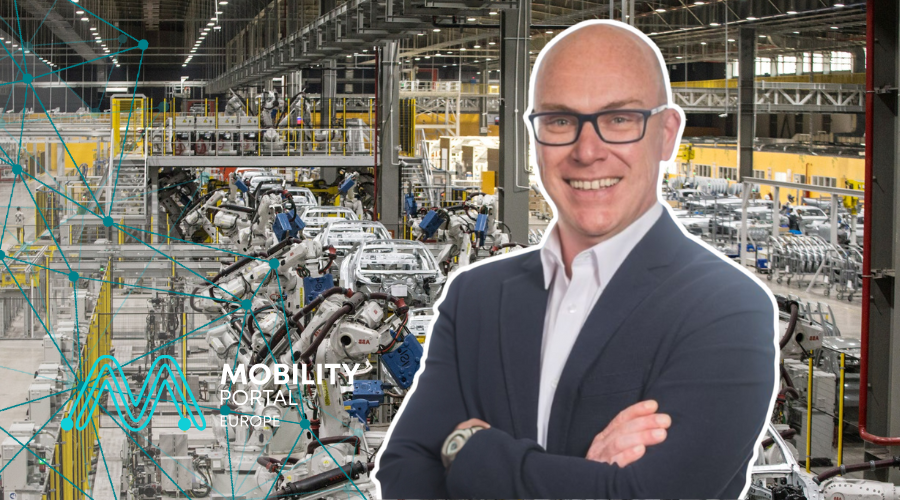The imposition of tariffs by the United States on eMobility products mported from Europe and China—reaching rates of up to 100% in some cases—has placed the eMobility sector in check.
A wave of strategic moves has been unleashed across the sector, all with a single objective: to survive Trump’s next move.
In an exclusive interview with Mobility Portal Europe, Didier Van Bouwel, Strategic Business Development Director at Cox Automotive Inc., analyses the situation:
“On the one hand, tariffs pose a threat to the competitiveness of European electric vehicles; on the other, they could catalyse a push for local production and innovation.”
With more than 20 years of experience in the automotive sector, Van Bouwel specialises in business development strategies across Europe.
He currently serves as Strategic Business Development Director at Cox Automotive International, where he leads key initiatives in markets such as Brazil, Europe and Australia.
Throughout his career at Cox Automotive (which operates in Spain through Manheim España), he has held several leadership roles, including Chief Operating Officer at Modix International, a company providing digital solutions for automotive commerce.
With this background, Van Bouwel highlights the reality currently faced by European manufacturers such as Mercedes-Benz and Volkswagen.
These OEMs are already considering relocating part of their production to the United States, while Chinese brands like BYD, Chery and Leapmotor are accelerating the construction of factories in Europe.
This strategy seeks to bypass new trade barriers and bring production closer to key markets.
According to ACEA, in 2023 the United Kingdom was the leading destination for battery electric vehicles (BEVs) exported from the European Union, accounting for 20.3% of the total value.
The United States followed with 11.8%, while Norway, China, and Switzerland also stood out as key markets.
These figures reflect the global reach of the EU’s eMobility industry and the importance of diversifying export destinations amid growing geopolitical tensions.
Europe: between threat and eMobility opportunity
“The future of European eMobility will depend, more than ever, on bold political responses and an industrial strategy aligned with the challenges of a fragmented global market,” Van Bouwel stresses.
The rising cost of exported electric vehicles hits manufacturers such as Porsche, BMW and Volvo directly, while supply chain tensions continue to push production costs upward.
Currently, only 32% of essential components—such as batteries, cells, and propulsion systems—used in EVs are produced in Europe, according to ACEA.
Dependence on external suppliers, mainly from Asia, leaves the industry vulnerable to trade restriction scenarios.
However, this situation could turn into a strategic opportunity… But how?
The European Union has set a target to produce at least 50% of the required battery supply within its own territory by 2030.
This falls under the “European Battery Alliance” framework, a protectionist initiative gaining traction in these uncertain times.
An underestimated risk: components in the eMobility value chain
Beyond finished vehicles, Van Bouwel warns of a less visible but equally critical risk:
“The impact of tariffs on imported parts is being underestimated. This could lead to supplier bankruptcies, supply chain disruptions and increased costs for charging operators, affecting the expansion of electric infrastructure.”
Europe’s reliance on imported components remains high: more than 70% of the battery cells used in Europe come from Asia, according to Benchmark Minerals Intelligence.
This means any disruption would affect not only vehicle production, but also the rollout of fast-charging networks and related infrastructure.
At this point, Van Bouwel raises a reality that should not be overlooked:
“The electromobility industry will not be able to remain on the sidelines of geopolitical tensions.”
Strategic decisions on factory locations, strengthening local supply chains and deploying critical infrastructure will be key to ensuring a sustainable and competitive transition to electric mobility.
The arrival of Chinese eMobility manufacturers: time to adapt and compete
The presence of Chinese manufacturers in the European electric mobility market has grown exponentially—from just 1% of EV imports in 2019 to more than 50% in 2023, according to data from Transport & Environment (T&E).
However, new European tariffs are beginning to reshape this landscape.
Brands like Leapmotor, in partnership with Stellantis, have halted assembly projects in Europe, while others like BYD are moving forward with their own factories, such as the plant announced in Szeged, Hungary, scheduled for 2025.
For Van Bouwel, “the key will be adapting to regulations, investing in local distribution networks, and maintaining competitive prices in a highly regulated and demanding market”.









